The Miller v. Bonta gun-rights decision is a couple of months old now, but it’s a stem-winder that does not fail to inform and entertain. In it, Roger T. Benitez, United States district judge for the Southern District of California, declared California’s system of gun laws that banned the purchase and possession of AR-15 rifles unconstitutional. There’s a link to a PDF of the decision on the Gun-Tests.com website (search for “Bonta” or click here), and I encourage Gun Tests readers to go through all 94 pages. For those of you who don’t want to do that, or who are afraid of PDFs like the folks in the Progressive commercial, I will quote from the decision extensively here. I cannot overstate how impressed I am with the decision’s reasoning, logic, clear writing, and dry humor as Judge Benitez takes down the arguments of AR-15 banners in California, and by extension, in other restrictive areas of the country. But enough blandishment. Please enjoy the meat I’ve carved out below, which jumps to other pages in the back.
Background: The case name in Miller v. Bonta was originally Miller v. Becerra, with Rob Bonta being named in his official capacity as the active Attorney General of the State of California. Formerly, the California State Attorney General was Xavier Becerra, who is now the 25th Secretary of the Department of Health and Human Services. On August 15, 2019, James Miller, a board member of the San Diego County Gun Owners, sued then-Attorney General Xavier Becerra and the Director of the California Bureau of Firearms, alleging that the ban was an unconstitutional restriction of Second Amendment rights.
Miller was joined by the San Diego County Gun Owners Political Action Committee, California Gun Rights Foundation, Second Amendment Foundation, and Firearms Policy Coalition, along with three other San Diego County residents who said they legally own rifles or pistols but are unable to use high-capacity magazines in them due to the law.
On June 4, 2021, Judge Benitez ruled that California’s Roberti–Roos Assault Weapons Control Act of 1989 (AWCA), which banned the ownership and transfer of specific models of firearms that were categorized as assault weapons, and other California gun-ban strictures, are unconstitutional violations of the Second Amendment on their face. In the decision, Judge Benitez made a great many points of law and facts that are worth noting. The blocks of language below are cut-and-pasted directly from the decision, except I’ve removed most of the legal cases and footnote cites.
From the decision, Page 1, line 17: “Introduction:”
Like the Swiss Army Knife, the popular AR-15 rifle is a perfect combination of home defense weapon and homeland defense equipment. Good for both home and battle, the AR-15 is the kind of versatile gun that lies at the intersection of the kinds of firearms protected under District of Columbia v. Heller, 554 U.S. 570 (2008) and United States v Miller, 307 U.S. 174 (1939). Yet, the State of California makes it a crime to have an AR-15 type rifle. Therefore, this Court declares the California statutes to be unconstitutional.
Plaintiffs challenge a net of interlocking statutes which impose strict criminal restrictions on firearms that fall under California’s complex definition of the ignominious “assault weapon.”
Page 2, line 17
This case is not about extraordinary weapons lying at the outer limits of Second Amendment protection. The banned “assault weapons” are not bazookas, howitzers, or machine guns. Those arms are dangerous and solely useful for military purposes. Instead, the firearms deemed “assault weapons” are fairly ordinary, popular, modern rifles. This is an average case about average guns used in average ways for average purposes.
One is to be forgiven if one is persuaded by news media and others that the nation is awash with murderous AR-15 assault rifles. The facts, however, do not support this hyperbole, and facts matter. Federal Bureau of Investigation murder statistics do not track assault rifles, but they do show that killing by knife attack is far more common than murder by any kind of rifle. In California, murder by knife occurs seven times more often than murder by rifle. For example, according to F.B.I. statistics for 2019, California saw 252 people murdered with a knife, while 34 people were killed with some type of rifle — not necessarily an AR-15. A Californian is three times more likely to be murdered by an attacker’s bare hands, fists, or feet, than by his rifle. In 2018, the statistics were even more lopsided as California saw only 24 murders by some type of rifle. The same pattern can be observed across the nation.
Page 3, line 10:
A. Pre-Heller Origin of the Assault Weapons Control Act (“AWCA”)
It is clear today, in the year 2021, that individuals have a right to keep and possess dangerous common arms. But California’s Assault Weapons Control Act (“AWCA”) was enacted in the year 1989. In 1989, the California Legislature was concerned that an assault weapon “has such a high rate of fire and capacity for firepower that its function as a legitimate sports or recreational firearm is substantially outweighed by the danger that it can be used to kill and injure human beings.” AWCA then banned assault weapons by specific makes and models.
AWCA was a policy choice unencumbered by constitutional considerations. The California Legislature weighed only the firearm’s value for sports and recreation against the relative dangerousness of the weapon and the danger of it being misused by criminals. It was a different time in legal history.
Page 4, line 2:
B. Pre-Heller Second Amendment Jurisprudence
In 1989, most judicial thinking about the Second Amendment was incorrect. Prior to 2008, lower court opinions did not acknowledge that the Second Amendment conferred an individual right to own firearms, or that the right applied against the states… In the year 1989, the California Legislature was not concerned with maintaining room for a citizen’s constitutional right to have a common firearm of one’s choosing to defend hearth and home. In making its policy choice, the California Legislature neither mentioned a modern rifle as a means of self-defense, nor did the core Second Amendment right appear to have been any part of its consideration. The formal legislative findings say nothing about self-defense. The balance was simply about criminal use, on the one hand, versus sporting or recreational activities, on the other hand. In the pre-Heller jurisprudential milieu, the pure policy choice made sense.
Page 6, line 3:
Concerning AWCA’s prohibited-features amendment, the Attorney General has not identified any relevant legislative history or legislative findings about the societal dangers of pistol grips, flash hiders, telescoping stocks, flare launchers or barrel shrouds. The State’s legislative information website lists several committee reports leading up to the signing of Senate Bill 23 by California Governor Gray Davis on July 19, 1999. But there are no studies of criminal gun usage recounted. There are no assault weapon experiences of other states or cities recited. There are no public hearings described. There is one indication, however: Senate Bill 23 was said to be similar to Assembly Bill 2560, which was passed the previous year, but vetoed by California Governor Pete Wilson. Governor Wilson issued a statement with his veto criticizing AWCA’s prohibited-features approach and offered this analogy: “If this bill’s focus were high speed sports cars, it would first declare them ‘chariots of death’ and then criminalize possession of Ramblers equipped with racing stripes and wire wheels.”
Page 8, line 2:
As an aside, the “assault weapon” epithet is a bit of a misnomer. These prohibited guns, like all guns, are dangerous weapons. However, these prohibited guns, like all guns, can be used for ill or for good. They could just as well be called “home defense rifles” or “anti-crime guns.”
The mechanical design features that identify a rifle as a California “assault weapon,” it is argued, tend to help a person shoot the rifle more accurately under pressure. The Plaintiffs make the point that this is a better condition for all lawful uses, i.e., a more accurate gun is better for everyone. After all, responsible gun-owners worry about the ending point of every round fired. If shooting in self-defense, a home defender wants every round to hit only attackers.
In contrast, the Attorney General argues that better accuracy makes it a more dangerous weapon. According to the Attorney General, “assault weapons enable a shooter to fire more rounds rapidly in a given period with greater accuracy, increasing the likelihood that more individuals will be shot and suffer more numerous injuries.” The implied context is a mass shooting. In the terrible mass shooting context, which fortunately is a rare event, reducing the number of innocent victims is the State’s goal, although it is not at all clear that a less accurate rifle would reduce the number of victims. A less accurate rifle in the hands of a mass shooter may very well result in different victims, but not necessarily less victims. On the other hand, in the self-defense context, which seems to be more common, taking accurate shots at attackers is vitally important for the innocent victim. While the state ought to protect its residents against victimization by a mass shooter, it ought also to protect its residents against victimization by home-invading criminals. But little is found in the Attorney General’s court filings reflecting a goal of preventing violence perpetrated against law-abiding citizens in their homes. Instead, the State’s litigation stance is more like the view recently expressed by a police chief in Oakland, California: we do not want victims to arm themselves; we want them to be good witnesses. Of course, a dead victim is a lousy witness.
Page 9, line 14:
E: Criminal Penalties
The State prefers a policy of residents not arming themselves with assault weapons, and for those who do, arresting residents. California Penal Code 30600 imposes a felony criminal penalty for anyone who manufactures, distributes, imports, keeps for sale, offers for sale, or lends an “assault weapon.” … As one commentator describes it, “[m]ere possession of an object that is commonplace and perfectly legal under federal law and in forty-four states will land you in prison, [will] result in the loss of your rights including likely the right to vote, and probably [will] cause you irreparable monetary and reputational damages, as well as your personal liberty. All of this despite the absence of even a single victim.”
Page 10, line 18:
The Second Amendment protects modern weapons. Caetano v. Massachusetts, 577 U.S. 411, 412 (2016). The firearms banned by California Penal Code § 30515 and deemed “assault weapons” are modern weapons. They are principally AR-15 type rifles, pistols, and shotguns. Plaintiffs and others refer to them as “modern sporting rifles” although they are clearly useful for more than just sport. They are modern rifles that do not look like the iconic rifles from years gone by. They are fabricated with synthetic polymers and anodized aluminum in cerakoted colors of black and brown and green. Parts once made of solid wood on guns of the past are gone. These modern rifles are constructed of lightweight alloys and titanium nitride barrels in angular skeletonized shapes. To those who grew up watching movie “westerns” with John Wayne, or Chuck Connors (“The Rifleman”) on television, modern rifles just do not look like rifles. The AR-15 platform in particular, is an “open source” design and includes firearms made by numerous manufacturers under different product names with countless variations and adaptations. In fact, the platform’s ability to accept modifications with ready-made retail parts without the need for specialized tools or expertise, is part of what makes these rifles popular. What advances in firearm design the future holds for these arms are yet to be imagined. When the term “modern rifle” is used in this opinion, it principally refers to a rifle built on the AR-15 platform with prohibited features.
Page 11, line 21:
Although the Attorney General sees it differently, the Supreme Court also recognizes that the Second Amendment guarantee includes a right to keep and bear firearms that have “some reasonable relationship to the preservation or efficiency of a well-regulated militia.” Miller, 307 U.S., at 178. Miller implies that a weapon that is commonly owned and that is useful for the common defense for a militia member is also protected by the Second Amendment.
Page 12, line 18:
A. The Heller Test
… [I]t is time to put the constitutionality of AWCA to the test. Two tests will be used: (1) the Heller test; and (2) the Ninth Circuit’s two-step levels-of-scrutiny test.
The Heller test is a test that any citizen can understand. Heller asks whether a law bans a firearm that is commonly owned by law-abiding citizens for lawful purposes. It is a hardware test. Heller draws a distinction between firearms commonly owned for lawful purposes and unusual arms adapted to unlawful uses as well as arms solely useful for military purposes. As applied to AWCA, the Heller test asks: is a modern rifle commonly owned by law-abiding citizens for a lawful purpose? For the AR-15 type rifle the answer is “yes.” The overwhelming majority of citizens who own and keep the popular AR-15 rifle and its many variants do so for lawful purposes, including self-defense at home. Under Heller, that is all that is needed. Using the easy to understand Heller test, it is obvious that the California assault weapon ban is unconstitutional. Under the Heller test, judicial review can end right here
Page 15, line 4:
2. Popularity Nationally
Nationally, modern rifles are ubiquitous. In 2018 alone (the most recent year with data), 1,954,000 modern rifles were manufactured or imported into the United States. Over the last three decades, 19,797,000 modern rifles have been manufactured or imported into the United States and the numbers have been steadily increasing.
Page 15, line 22:
3. More Popular than the Ford F-150 Pickup Truck
Modern rifles are popular. Modern rifles are legal to build, buy, and own under federal law and the laws of 45 states. There are probably more modern rifles in circulation than there are Ford F-150 pickup trucks. In 2018, 909,330 Ford F-150s were sold. Twice as many modern rifles were sold the same year. Imagine, every time one passes a new Ford pickup truck, it is a reminder that two new modern rifles have been purchased. That is a lot of modern rifles owned by Americans.
Page 17, line 8:
At the core this is a simple case. Like the cases of Heller and McDonald, here the government bans an entire class of very popular hardware — firearms that are lawful under federal law and under the laws of most states and that are commonly held by law-abiding citizens for lawful purposes. Under no level of heightened scrutiny can the law [the Assault Weapons Control Act] survive.



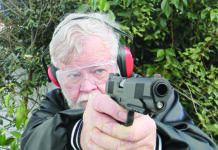
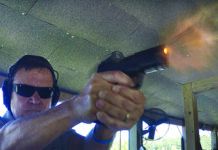
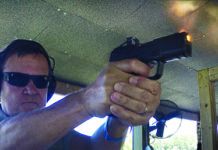
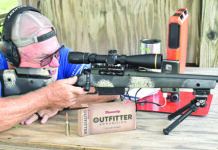
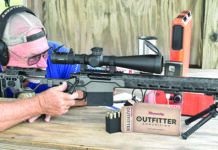

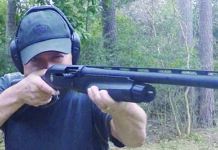
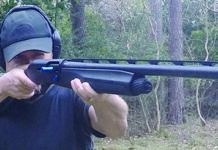
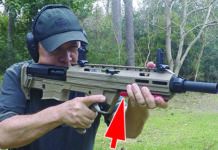





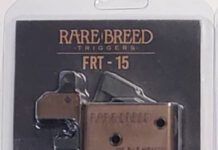








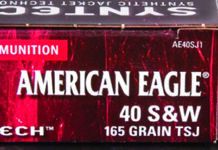

One of the best “poke in the eye” for California Liberals. While most legal reviews of gun laws are rather dry, Mr. Woodard has brought a fantastic decision on the AR-15 to life. Yes, I am a refugee from 40 years living in Oakland. I left after the 5th riot downtown and the blocking of an Interstate Highway. Elected Officials with rings in their noses: 10 years ago, I wrote to an Oakland Supervisor to complain about the last gun store being rode out of town by regulations passed by her Board. This Sup didn’t have a clue and told me she thought gun stores were already illegal in Oakland. County of Hawaii Police Chief the Lord of the Manner: after 9/11, the Federal Government tried numerous times to get a carry permit for a guard at a local field office in Hilo open to the public daily. The police chief denied the permit, saying the guard had not demonstrated a need for a firearm. This was the only guard in four western states, Hawaii, Guam, American Samoa and Saipan who served the U.S. Government unarmed.